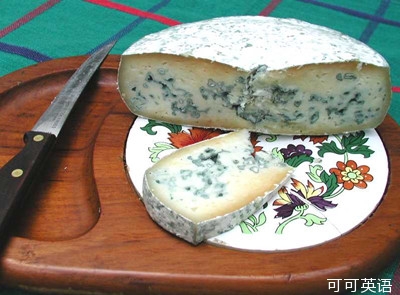Usually when we think of moldy foods, we picture a month-old loaf of bread forgotten in the back of a refrigerator. But some moldy foods can be quite delicious. For instance, many cheeses owe their sharp flavor to molds. The making of any cheese is essentially a process of limited, controlled spoilage.

In effect, a mold partly digests, or rots the cheese. The molds used to ripen cheese are not the molds that would naturally develop on the cheese over time, but are specially-produced molds. During the process of aging any mold-ripened cheese, fats and proteins are broken down into strong smelling molecules. These molecules give mold-ripened cheese its particularly strong odor and taste. A bluish-green mold helps ripen blue cheese, giving it its name, aroma and color.











